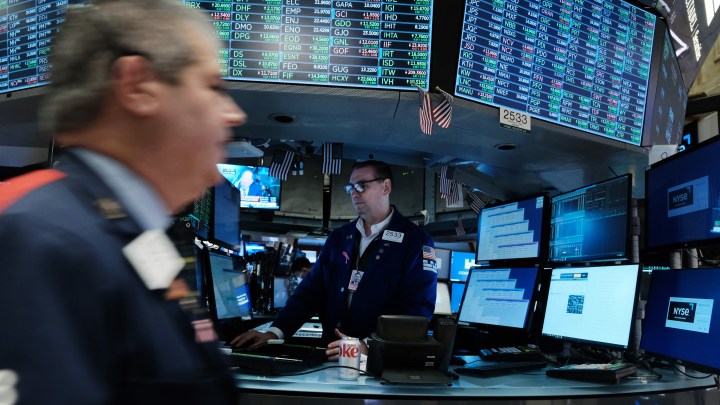
The latest GDP report shows the economy’s growing — and that trouble’s ahead
The latest GDP report shows the economy’s growing — and that trouble’s ahead

A lot of the economic data we talk about lets us take the temperature of some critical part of this economy, like housing or consumer spending. But on Thursday, we got the biggest of big-picture numbers: gross domestic product, the sum of all goods and services in the economy through the last quarter.
It was good news — GDP increased at an annual rate of 2.6% July through September. That’s a little better than economists expected and a lot better than the first and second quarters of the year, when GDP shrank.
The growth last quarter was down to growth in exports as well as consumer spending, capital investment and government outlays. On the flip side, the housing market’s being pulled down by rising mortgage rates. And there’s likely more trouble on the horizon.
Thursday’s headline GDP number was a nice surprise, said Joel Kan at the Mortgage Bankers Association. “On the surface, a really strong report. We had a 2.6% increase. That’s more than trend growth, which is about 1.8% to 2%.”
So what’s the problem with this picture?
It looks back, not forward. And heading into 2023, the economy faces powerful headwinds. Strong exports boosted GDP in the third quarter.
“Unfortunately, we don’t think strength in exports will continue for much longer,” said Paul Ashworth at Capital Economics. “Global backdrop is very weak, with problems in Europe and China. The stronger dollar is making it hard for U.S. exporters to compete.”
Meanwhile, rising interest rates already have the housing market deep in the dumps, said Kan of the Mortgage Bankers Association.
“We saw a sixth-straight quarter of residential investment decline — subtracted 1.4 percentage points from GDP growth,” he said. “And that’s the most since 2007, the beginning of the last recession.”
The resilient American consumer has buoyed the economy coming out of the pandemic. But there are warning signs too.
“The consumer continues to spend, but is spending at a slower rate,” said John Leer at Morning Consult. Consumers are drawing down savings to keep up spending. “Two years ago, consumers had about $4.8 trillion in personal savings. And that’s down now to about $680 billion,” he said.
People are likely to cut back further, Leer said, if they start losing their jobs or worrying more about a coming recession.
There’s a lot happening in the world. Through it all, Marketplace is here for you.
You rely on Marketplace to break down the world’s events and tell you how it affects you in a fact-based, approachable way. We rely on your financial support to keep making that possible.
Your donation today powers the independent journalism that you rely on. For just $5/month, you can help sustain Marketplace so we can keep reporting on the things that matter to you.











